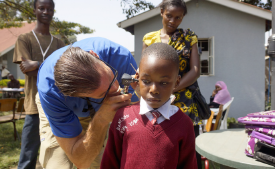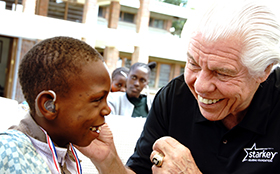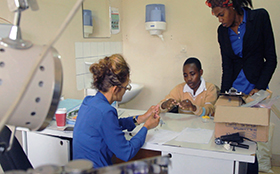Hearing Missions
Community-Based Hearing HealthCare
According to the World Health Organization, around 466 million people worldwide have disabling hearing loss, and 34 million of these are children, with the greatest prevalence living in developing countries. Unfortunately, less than three percent of these individuals can afford hearing aids or even have access to the care they need. We are working tirelessly to change this by building strong partnerships, empowering local teams and expanding our three-phase Community-Based Hearing HealthCare model around the world.
Phase 1

Patient Identification
- Identify and train partners and community-based health workers.
- Identify, screen and give primary ear-care services to potential hearing aid candidates.
- Take ear impressions.
- Create custom earmolds.
Phase 2

Hearing Mission
- Fit hearing aids and custom earmolds on qualified hearing aid candidates.
- Counsel and train hearing aid recipients, teachers, student ambassadors and patients on how to care for and operate hearing aids.
- Provide AfterCare information to hearing aid recipients on where to go and who to contact for follow-up services.
- Select and train local program teams to execute ongoing program activities.
Phase 3

AfterCare Program
- Conduct outreach to provide AfterCare services to patients within the first month after receiving hearing aids.
- Provide ongoing monthly AfterCare services at a central location giving patients access to additional care including recounseling, batteries and free services to repair or replace hearing aids when needed.
- Monitor and evaluate program and team.
- Provide on-going education for the program team and community-based healthcare workers.
- Identify new hearing aid candidates for future phase one.
Phase 4

Mainstreaming
- Identify children with lesser degrees of hearing loss
- Help develop their communication skills, in conjunction with sign language, with the goal to be mainstreamed into a normal-hearing classroom
- Conduct school visits and train teachers on how to best support children with hearing loss and speech needs
- Educate and support parents on areas like hearing loss, hearing aids and speech and listening at home
